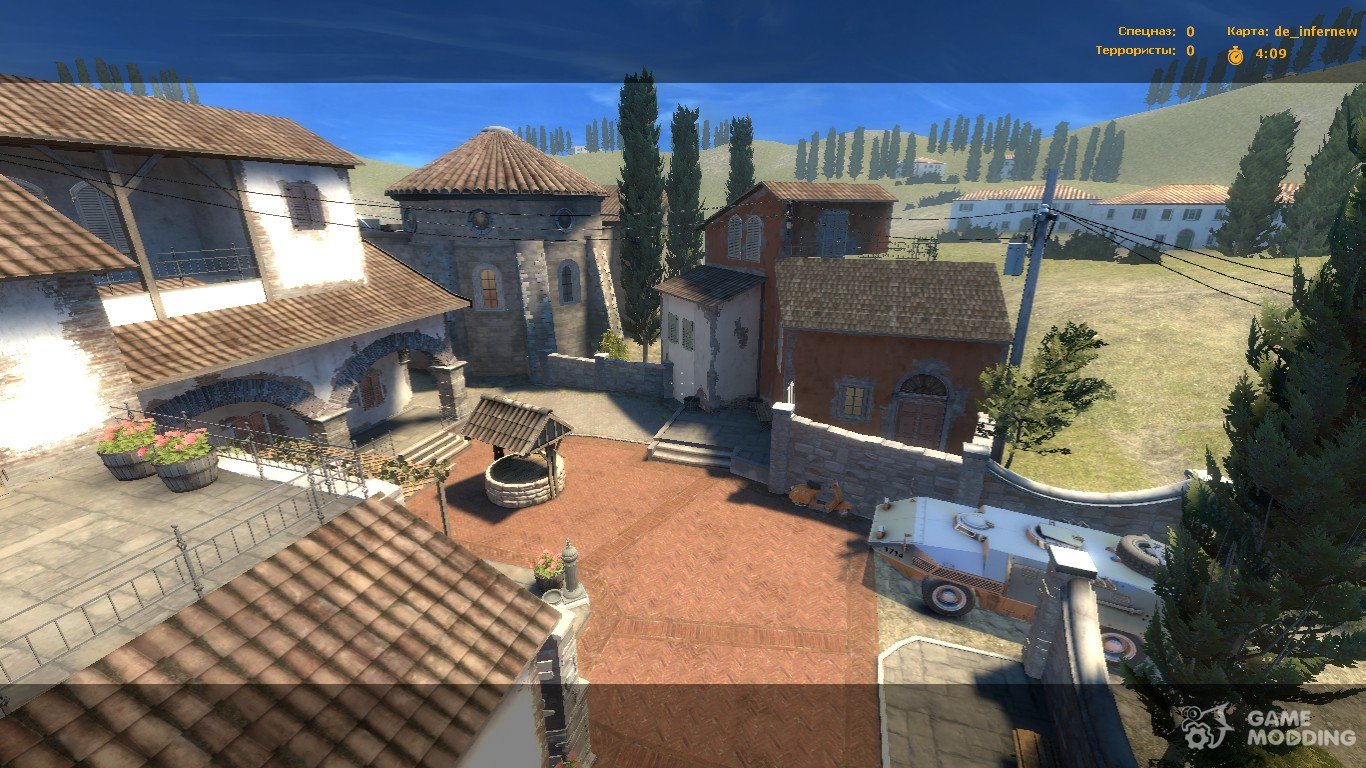All Files In Counter-Strike: Source DE Maps. DE Maps CS: Source DE Rotterdam Map. DE Rotterdamn is a re-made version from the Original Counter-Strike map rotterdam. Rotterdam is a defusal map that takes place at night.
Lighting and Shader Improvements
With the introduction of new maps, models, and assets come a number of visual upgrades and features that we think mapmakers and community content creators alike will find useful and exciting. The following is an overview of these features and how they can be enabled in your own maps and content.
A Counter-Strike: Source (CS:S) Forum Thread in the Customization category, submitted by suckypro bots for custom maps Counter-Strike: Source Forum Threads Signup Login. Download Counter-strike 1.6 game with included bots. This Counter Strike 1.6 will allow you to play a game with bots. This is a version that is made according to the original version of the classic game. The game has a standard menu layout, standard sounds, standard weapon models, and standard bots. Cs 1.6 bots are controlled by the letter H.
- Lighting Improvements
- New Shader Features
One of the areas that we upgraded extensively during the development of Nuke was the in-game lighting. With Nuke’s new look, we strived for a clean, colorful aesthetic with bold, realistic lighting and global illumination.
Then in light_exe (VRAD) make sure you have the parameter
-StaticPropLighting
-final is the equivalent of having -StaticPropLightingScale 16. We recommend you try some different values and see which one works best for you.
To tackle this problem we separated all direct and indirect precomputed lighting data and use these two data sets to accurately blend our cascade shadow maps into the scene. This allows indirect and ambient lighting to alter the shadow color and strength in a much more natural way:
To enable this feature, add the following lines to your material (.vmt file):
'$phong' '1' //Enables phong highlights
'$phongexponent' '60.0' //how sharp the highlight is 1=soft 100=sharp

'$phongMaskContrastBrightness' '[2 .7]' //increases the contrast of the phong mask
'$phongAmount' '[10 10 10 1]' //RGBA values that can boost, tint or lower highlight strength
Note that this should be used with the LightmappedGeneric and WorldVertexBlend shaders.
Counter Strike Source Maps With Bots Downloads
'$decaltexture' 'yourdecaltexture' //path to you decal texture
'$decalblendmode' '0' // controls blending of decal: 0=alpha masked 1=multiplied
Note that this should be used with the VertexLitGeneric shader.

'$addbumpmaps' '1' //enables bumpmap blending
'$bumpmap' 'texture' //bumpmap texture 1
'$bumptransform' 'center 0 0 scale 1 1 rotate 0 translate 0 0' //scale & rotation of bumpmap 1
'$bumpdetailscale1' '1' //Controls how strong bumpmap 1 is (0-1, 0=off 1=full)
'$bumpmap2' 'texture' //bumpmap texture 2
'$bumptransform2' 'center 0 0 scale 1 1 rotate 0 translate 0 0' // scale & rotation of bumpmap 2
'$bumpdetailscale2' '.5' //Controls how strong bumpmap 2 is (0-1, 0=off 1=full)
Note that this works on the lightmappedgeneric shader. When a $detail texture is also used with $detailscale, it will override the '$bumptransform2' parameter.
'$envmap' 'env_cubemap' // A cubemap is needed for this to work
Counter Strike 1.6 With Bots
'$envmapanisotropy' '1' // Enables cubemap anisotropic filtering
'$envmapanisotropyscale' '1' // Amount of ‘stretching’ that should be applied (0-1)
Note that this works with the LightmappedGeneric and WorldVertexTransition shaders
'$envmap' 'cubemaptex' // Name of cubemap texture (envcubemap for auto)
'$envmaplightscale' '1' // (0-1) How much lighting influences the cubemap
'$envmaplightscaleminmax' '[0.0 0.3]' // [min max] How strong the reflections should be

'$envmapsaturation' '0.2' // (0-1) How saturated the reflections should be
This works on a variety of shaders, including LightmappedGeneric, WorldVertexTransition and VertexLitGeneric.
Counter Strike Source Maps With Bots Download Torrent

'$dropshadowopacity' '1' //How strong the highlights and shadows should be
'$dropshadowscale' '0.0125' //The size in UV coordinates of the drop shadow
'$dropshadowhighlightscale' '0.0125' //The size in UV coordinates of the drop highlight
'$dropshadowdepthexaggeration' '1' //Use the depth in the blend modulation texture to vary the size of the drop shadow. Creates a more organic look. May require increasing the drop shadow scale.
Note that this only works when your blend material has normal maps, a blend modulation texture and your shader settings on high. It is visible in direct lighting from the light_environment entity, so is best used on outdoor areas.
Counter Strike Source Maps With Bots Download Free
As an added bonus you can find a new map in the latest CS:GO SDK that contains all of the modular systems and assets created for Nuke so that you can easily see examples of how they can be combined and customized and get started using them in your own maps today. Simply navigate to Steam